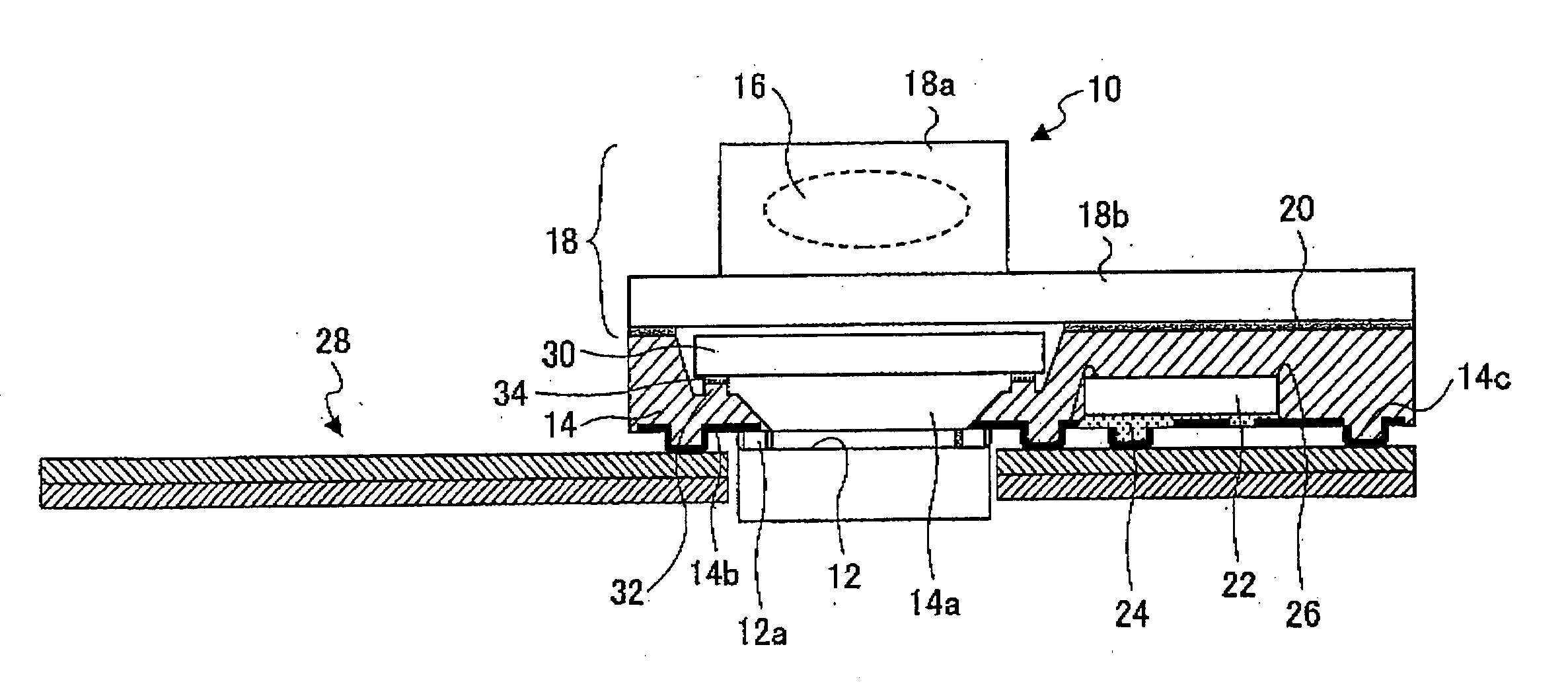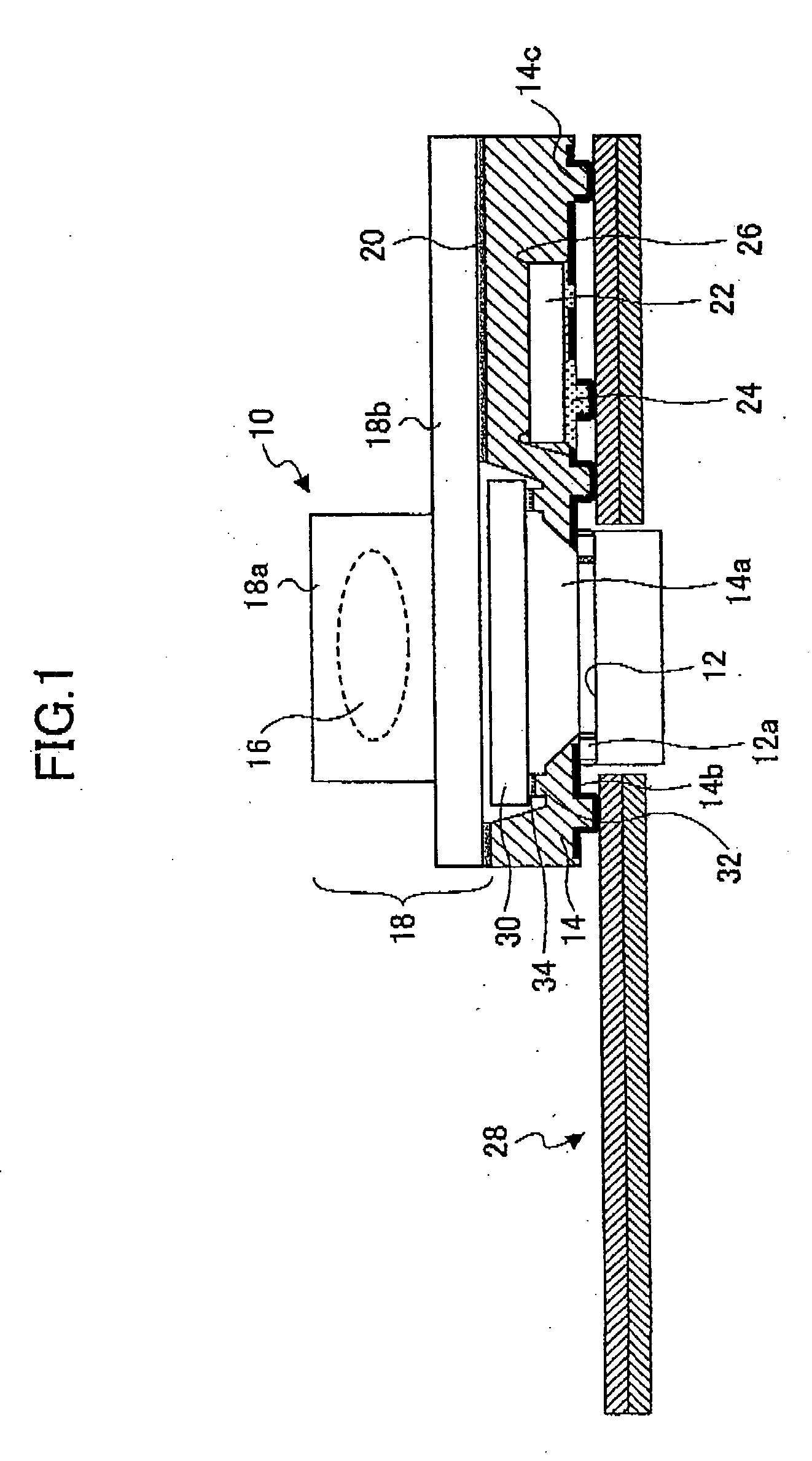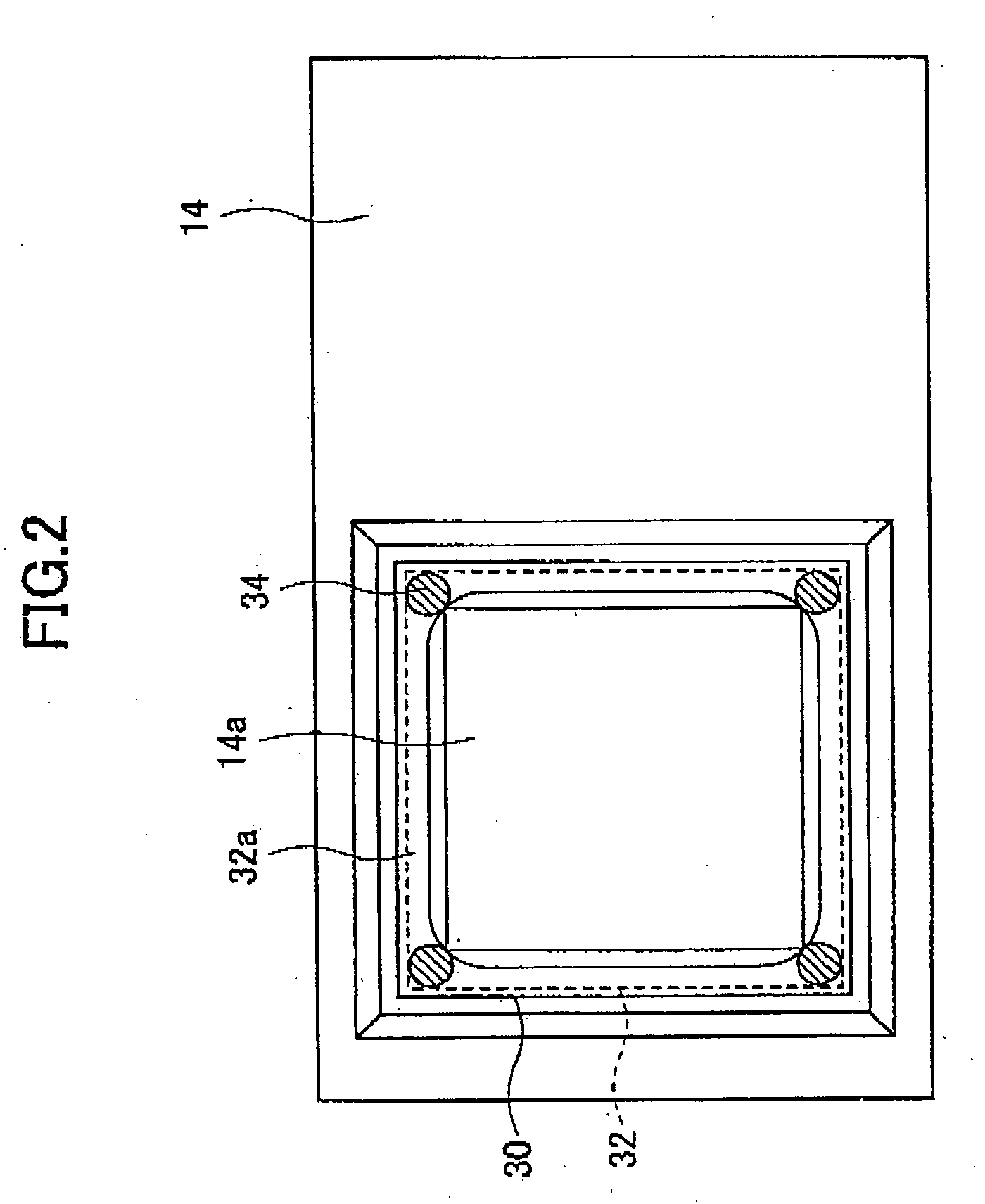Camera module
a camera module and camera technology, applied in the field of camera modules, can solve the problems of deteriorating the function of the optical filter, affecting the image quality of the camera module, and unable to remove extraneous matter completely,
- Summary
- Abstract
- Description
- Claims
- Application Information
AI Technical Summary
Benefits of technology
Problems solved by technology
Method used
Image
Examples
first embodiment
[0059] First, a description will be given, with reference to FIG. 1, of the present invention.
[0060]FIG. 1 is a cross-sectional view of a camera module according to the first embodiment of the present invention. The camera module shown in FIG. 1 comprises a package 14 having an imaging element 12 and a lens unit 18 having an image pickup lens 16 (hereinafter, simply referred to as lens). The package 14 and the lens unit 18 are formed by resin, and the lens unit 18 is fixed to the package 14 via an adhesive 20. It should be noted that, in FIG. 1, the lens unit 18 is not shown as a cross-section.
[0061] The lens unit 18 comprises a mirror-cylinder part 18a in which the lens 16 is accommodated and a base part 18b which is a portion fixed to the package 14. The mirror-cylinder part 18a is provided with a through opening (not shown) so that a light passed through the lens 16 passes through the through opening and travels toward the package 14. As the lens 16, a plastic lens is used gener...
second embodiment
[0083] Next, a description will be given, with reference to FIG. 6 and FIG. 7, of the present invention.
[0084]FIG. 6 and FIG. 7 are cross-sectional views of a camera module according to the second embodiment of the present invention. It should be noted that the lens unit 18 is not indicated as a cross section. In FIG. 6 and FIG. 7, parts that are the same as the parts shown in FIG. 1 are given the same reference numerals, and descriptions thereof will be omitted.
[0085] In the second embodiment of the present invention, minute particles are prevented from separating from the filter 30 by covering a circumferential portion of the filter 30 by a thin film, a resin, etc. The filter 30 shown in FIG. 6 and FIG. 7 is formed with a thin film on the circumferential portion including the side surfaces before it is incorporated into the camera module.
[0086] That is, the filter 30 is subjected to a thin film forming process after it is individualized by being cut out from a large substrate. T...
third embodiment
[0098] Next, a description will be given of the present invention.
[0099] First, a description will be given, with reference to FIG. 10, of a basic structure of a camera module to which the third embodiment of the present invention is applied. FIG. 10 is a cross-sectional view of the cameral module to which the third embodiment of the present invention is applied.
[0100] The camera module 50 shown in FIG. 10 comprises a package 54 having an imaging element 52 and a lens unit 58 having an image pickup lens 56 (hereinafter, simply referred to as lens). The package 54 and the lens unit 58 are formed of resin, and the lens unit 58 is fixed to the package 54 via an adhesive 60. It should be noted that the package 54 is cut out in FIG. 10, and a cross-section thereof is shown.
[0101] The lens unit 18 comprises a mirror-cylinder part 58a in which the lens 56 is accommodated and a base part 58b which is a portion fixed to the package 54. The mirror-cylinder part 58a is provided with a throug...
PUM
 Login to View More
Login to View More Abstract
Description
Claims
Application Information
 Login to View More
Login to View More - R&D
- Intellectual Property
- Life Sciences
- Materials
- Tech Scout
- Unparalleled Data Quality
- Higher Quality Content
- 60% Fewer Hallucinations
Browse by: Latest US Patents, China's latest patents, Technical Efficacy Thesaurus, Application Domain, Technology Topic, Popular Technical Reports.
© 2025 PatSnap. All rights reserved.Legal|Privacy policy|Modern Slavery Act Transparency Statement|Sitemap|About US| Contact US: help@patsnap.com



